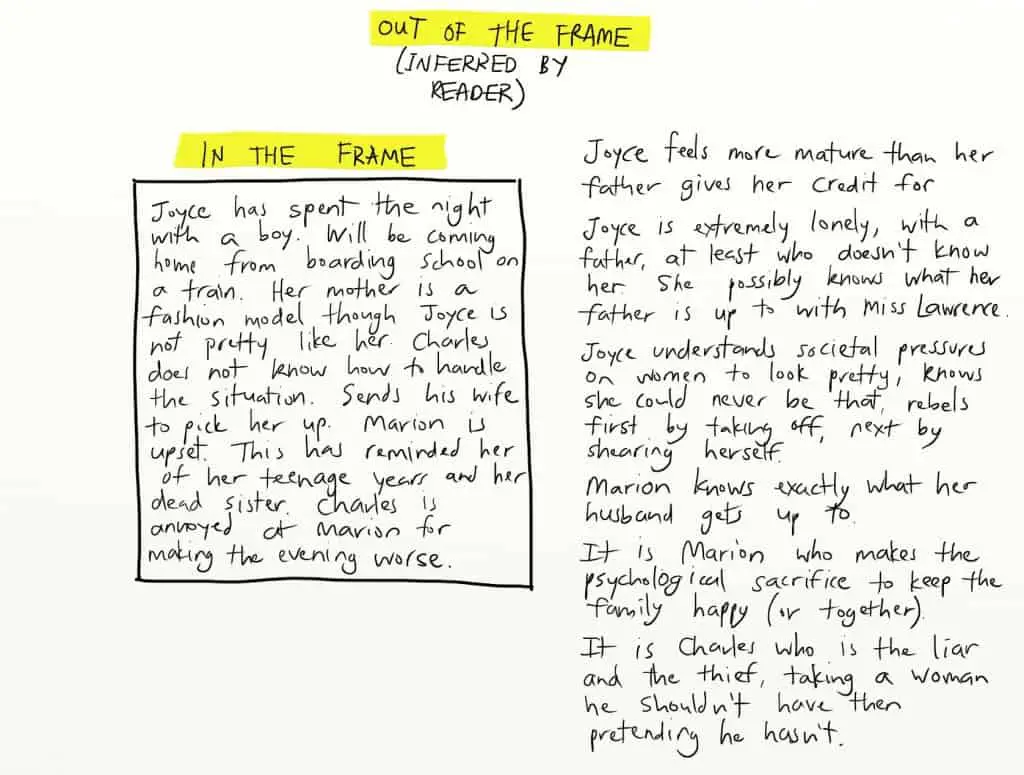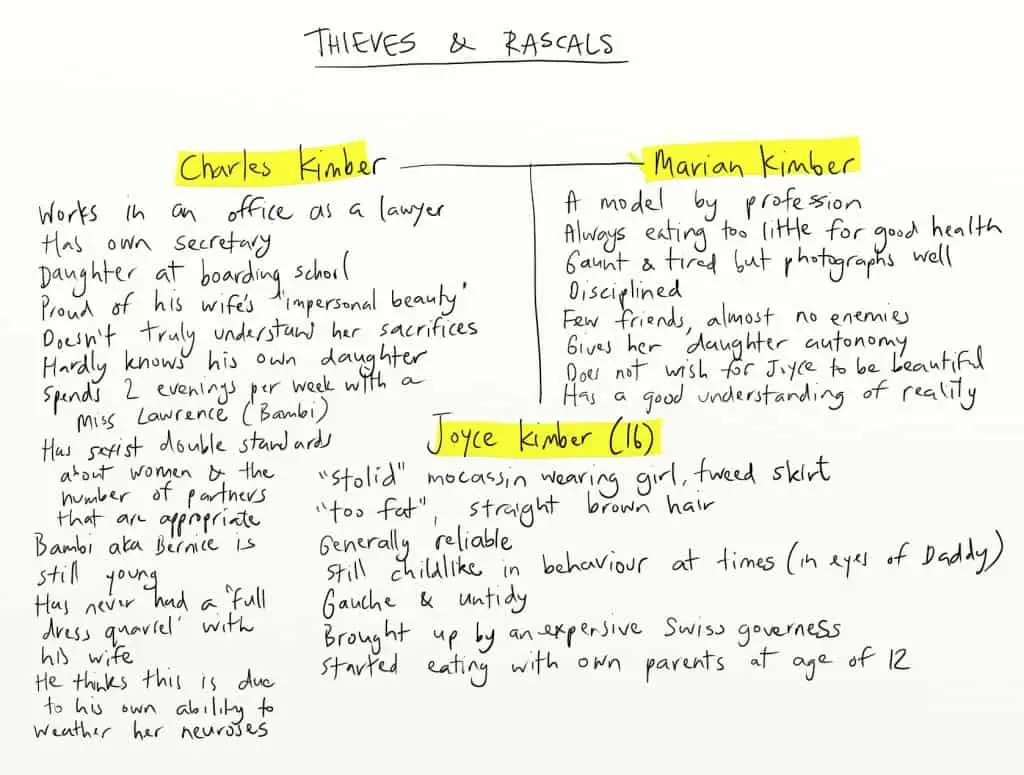“Thieves and Rascals” (1956) by Mavis Gallant is a masterclass in keeping part of the main interest out of the frame. One of the central characters is portrayed as an interesting character and I would like to ‘meet’ her on the page. Instead, as the story ends, I realise we’re not going to meet her at all; this is actually a narrative about her mother. This story is equally interesting because although the reader may expect certain tropes, both mother and daughter defy our stereotypes.

PLOT
A father is called at work and his secretary passes on a letter from his teenage daughter’s headmistress. The letter says his daughter has absconded from boarding school and spent the night with a boy. The father returns home and has a discussion with his wife. The wife is upset not because the daughter has absconded per se but because of an entire set of cultural values around it.The husband refuses to listen to his wife, who is letting on more than he chooses to acknowledge.
SETTING
Unlike many other stories in this collection, the setting is not one of the characters in its own right. A reference to Grand Central Station tells us the family live somewhere in or around New York. The father has a job in an office, as management; the mother is a model and they send their daughter to boarding school. Written in 1956, this could almost be a family straight out of Mad Men.
CHARACTER

This is a portrait of a marriage in which the wife, being trapped in a marriage when it was not easy/socially acceptable to leave, knows that her husband is having an affair but makes the decision to suppress it. But every now and then it all gets too much, presumably when she ‘breaks a string of pearls’. When a cat dies she is overcome with grief. She is hit now, again, when she finds out that her 16 year old daughter has spent the night with a boy. Reminded of her own teenage years, and an incident with a boy, she talks to her husband in a circumlocutionary way about lying ‘men’, when the reader knows (due to the dramatic irony of having been told about Bambi Lawrence) that Marian Kimber is really talking about her own ‘lying husband’.
Charles Kimber either chooses not to listen to his wife, or to wilfully misunderstand her. He has forgotten about his wife’s sister who died 17 years ago, a woman who was so very important to Marian. He chooses to believe that his wife is not really angry with ‘men’, but is simply angry about the situation at hand. Not only that, but he credits himself for a marriage without huge rows, and his own ability to put up with his wife’s many neuroses.
It is clear — especially to a modern audience, perhaps? — that Marian has a good handle on her own plight, and on the plight of women in 1950s America. This was very much a man’s world and women had to put up with a lot. Even her profession is the height of female oppression. She even has to stand in the cold in flimsy dress for the viewing pleasure of others. The scene where her own husband happens to walk past this street scene exists to demonstrate that Charles Kimber is incapable of anything but the most surface of empathies; he sees that she is cold, but can’t see that she is basically pimped out, in a way, and it wasn’t until he read one of his wife’s interviews in a magazine that he learnt the physiological discomfort of not eating enough. Instead, his wife’s inability to enjoy her dinners only put himself in an uncomfortable state of mind, and only ‘at first’. He has obviously learnt to ignore his wife’s discomfort, in eating and in general.
THEME
It’s not just the Beautiful girls who have sex. We shouldn’t expect the ‘plain’ girls to be less attractive to teenage boys and to have a lower sex drive.
Beautiful women are held up by society as sexual gods but have their own troubling backstories. Moreover, beautiful women don’t necessarily want this privilege for their daughters.
1950s marriages, ones which seem ‘happy’ are all about sacrifice, and perhaps that sacrifice is all on one person to make.
Happiness equals ignorance, if you can maintain ignorance.
TECHNIQUES OF NOTE
Every Scene Has Multiple Purposes
Apart from the masterful way Mavis Gallant keeps information from the page, asking the reader to work just a little in order to understand the story, Gallant is also shows mastery of dramatic irony. A lesser writer may have dwelt for longer on the fact that Charles Kimber is having an affair with a younger woman named Bambi. Instead, we get one brief scene. In this scene we learn a lot about Charles and this information will allow readers to decode Marion’s sadness later that night when they are in bed: Charles is a man of habit, despite his risqué extramarital relationship (he sees his mistress ‘two times a week’ — no spontaneity even there); he likes that Bambi has no real personality; Bambi is much younger than he is and therefore safe, because the power is with him; Bambi cooks for him at her apartment, showing his traditional attitude towards what women should do for men. The reader now has a very clear idea of what kind of woman this lawyer likes.
Avoidance of, or Careful Use of, Female Tropes
In real life women are multi-faceted, yet in many stories the reader/viewer doesn’t see that. On the other hand, every now and then you find a woman in real life who seems to fit the stereotype exactly. Real life is like that, and this story is a reflection of real life.
The reader will be used to certain narrative conventions, one of those being the vanity of fashion models. Mavis Gallant defies this expectation by having Marion let her daughter eat as many sweets as she likes, saying that the daughter is old enough to do as she likes with her own body. This not only fosters empathy in the reader for Marion, but hints at broader psychological issues; Marion does not feel her own body belongs to her. Even the headmistress of the boarding school is ‘younger and healthier’ than Charles expects; women are defying stereotypes from the very first page. Most defying of all is the plain daughter who has nevertheless attracted the attention of a boy and possibly had sex with him. These counter-caricatures are amplified by the uber-caricature of the mistress, who is not only young but calls herself ‘Bambi’ and has a cat which she treats as a baby, presumably because as the Other Woman she’s not in a position to have her own family.
STORY SPECS
Approx 4,300 words
Close third person point of view, mainly in Charles’ head. This allows the readers to infer the ‘real story’ for ourselves, as Charles’ view on the world is unreliable. This is an example of an unreliable narrator, but not in the traditional first person point of view. Instead, the narrator explains Charles’ reaction to his world. This kind of unreliable narration is not easy to achieve.
This story can be found in the collection The Cost Of Living.
COMPARE WITH
The first few seasons of Mad Men. Unable to deal with his own emotions let alone his wife’s, Don Draper says to Betty a version of, ‘Haven’t I given you everything you want?’

Away From Her is a short story by Alice Munro (also adapted into film) and, like this story, the reader is left to infer things about the marriage. Also like this story, the reader is at first invited to see the marriage from the husband’s point of view. A few clues tell us this happy marriage has not always been so. Unlike in this story, the husband is forced to confront his own failings to a degree.
WRITE YOUR OWN
Have you ever had a difficult conversation with someone who’s not on the same wave length as you, in which you talk past each other and fail to understand what’s really bothering the other? Perhaps the true meaning of the conversation revealed itself much later.
Have you ever got to know someone and found that they defied your initial impressions of them?
Have you ever had relationships with people in which one person must ‘keep the peace’ by turning a blind eye to bad behaviour?
